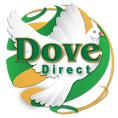Dove Direct Print & Marketing Blog - B2B Content Marketing Numbers for 2018
Welcome to the Dove Direct Print and Marketing Blog. Today's post, "B2B Content Marketing Numbers for 2018" uncovers current B2B content marketing numbers, depicts which marketing tools and types are rated best, and showcases where the B2B content marketing surge is headed. In the event your B2B organization has been slow to, or have failed completely to incorporate the latest B2B content marketing trends, this post is a must-read for your marketing team. Conversely, for those B2Bers who have embraced content marketing changes, these researched numbers are also well worth understanding.
In short, B2B content marketing has been evolving over the past 5 years, and has grown up, or come of age so to speak, particularly blowing apart the notion that B2B content marketing strategies are and should be invariably different from that of B2C content marketing strategies.
John Hall, CEO of Influence & Co. suggests that 2018 could become "one of the most interesting years for marketing yet." Mr. Hall continues to state; "As the menu of marketing tactics becomes longer and more diverse, marketers are challenged to consider their budget and strategy from every angle." We already know that social media platforms are in a race to help better position advertisers' content, including better targeting tactics, and thus far the jury is out regarding the effectiveness and ROI results from these changes. That said, stay tuned for upcoming reports with social media advertising numbers. However, for today, we'll stick to the numbers being reported from the B2B marketing community as reported by coSchedule's State of Marketing Strategy survey.
Content Creation Time Spent
Every marketing team is tasked with creating marketing content that has to deliver the ROI (Return on Investment). Therefore, the time it takes to create a piece of content becomes a major factor in delivering ROI while staying within the budgetary constraints. All things being equal, we also contend that marketing teams are very aware of content quality, and from a visual perspective, those types of content that are visual based, such as graphical images and video treatments fall into a wide array of time required to finish the piece for final distribution.
Notwithstanding any of the considerations based on the variances of time required for content marketing creation complexities, time allotments can vary widely. And yes, the size of the budget will generally determine maximum hours spent on each piece of marketing collateral creation.
The "State of Marketing Strategy Report," conducted by coSchedule states most marketers spent anywhere between 1 and 19 hours to complete a piece of marketing collateral. This report was based on data from a survey of 1,597 marketers from 83 countries. coSchedule's report begins with stating that the basis of the report operated within the scope of marketing truisms, and to that end either verity those marketing truisms against standard marketing wisdoms, or to see if instead, they are indeed marketing myths.
The time spent on developing a single piece of content ranges from 1 to 19 hours, and the breakout of the participating respondents percentages are as follows:
- 28% of the marketing teams spent 1 to 3 hours creating a single piece of content
- 24% of the marketing teams spent 4 to 6 hours creating a single piece of content
- 14% of the marketing teams spent 7 to 9 hours creating a single piece of content
- 11% of the marketing teams spent 10 to 19 hours creating a single piece of content
- The remaining number of the marketing teams spent an hour or less creating a single piece of content
Conclusions: For one, there was a pretty weak correlation between a marketer's time spent creating a single piece of content and the reported quality of that content. In addition, the research also demonstrated a very weak correlation between time spent creating content and achieving marketing goals. In short, this means that the quality over quantity mindset fails to equate with rock solid results. In addition however, there was a slightly positive correlation between content quality and marketing success, but not exactly earth shattering. At the end of the day, the report suggests these stats indicate that we may have an epidemic of marketers creating the wrong kind content.
In the event you may be wondering the number of personnel that made up the marketing teams, those respondents, or participant team sizes were also a consideration for the overview of this report. Those respondent team sizes were as follows:
- 59% of the marketing teams were comprised of 1-2 team members
- 17% of the marketing teams were comprised of 6-10 team members
- 16% of the marketing teams were comprised of a single or 1 team member
- 6% of the marketing teams were comprised of 11-25 team members
- 3% of the marketing teams were comprised of 26+ team members
Content Creation Types
What is interesting about these marketing team numbers is that it would appear to support the revenue ideas proposed in the book, "The Long Tail," published in 2006 and penned by Wired's editor-in-chief, author Chris Anderson. Namely these ideas suggest that the long tail of businesses can be seen as the letter L, with the top Fortune 100 and 500 companies making up the vertical part of the letter "L," with the small companies being the horizontal part of the L, extending out into infinity.
Overall, this L or Long Tail concept is based on available revenue generation, stipulating that the Fortune 100 to 500's max out at some point on the vertical scale, and the small businesses revenue line has the potential of unending progress on the horizontal scale. It will be interesting to assess this hypothesis to examine how that theory is playing out.
The types of B2B marketing content unearthed by the coSchedule's report are also illuminating, being identified as the most common types of content being created by the 1,597 participating marketing teams. And to that end, those numbers were as follows:
- 48% of the marketing teams created blog posts
- 24% of the marketing teams created social campaigns
- 14% of the marketing teams created emails campaigns
- 5% of the marketing teams created online ads
- 2% of the marketing teams created eBooks
- 2% of the marketing teams created White Papers
- 2% of the marketing teams created Courses
- 1% of the marketing teams created Webinars
- 1% of the marketing teams created Podcasts
Conclusions: There was no correlation between the type of primary content created and marketing success. That said, blogging was established as a priority for marketers across the board, however; blogging is a low-barrier to entry activity that can potentially yield high rewards when done well, and this brings us to the far reaching outlier from this part of the report. When a brand is looking for the extra 1 to 2 percent growth, it can come from a different content type, such as creating a podcast, or writing an ebook. We suggest that brands willing to create content that had single digit creation numbers should consider adding these content types to the marketing mix and then recalculate ROI against other content.
Customer Research
Audience research is a high-value activity, and has been one since the early days of Nielsen's television programming data books. Well, we have come quite a long way from the early days of Nielsen, with big data tools being able to uncover much deeper analysis of customer personas.
Marketing content that is created to speak to a particular customer persona will yield better results among those targeted with no-persona designations. According to the State of Marketing Strategy Report, a whopping 65% of survey respondents rarely conduct research, which means the majority of marketers fail to do so. The following set of percentages identify the rate at which marketers conduct customer research:
- 8% of the marketing teams conducted customer research 1+ times per month
- 10% of the marketing teams conducted customer research 1-2 times per quarter
- 18% of the marketing teams conducted customer research 1-3 times per year
- 38% of the marketing teams conducted customer research seldom
- 27% of the marketing teams conducted customer research never
These customer research results impact the success of marketers that do conduct research. The study found that among successful marketers, 242% are more likely to report conducting audience research at least once per quarter when compared to those who don't. Marketers who conduct a customer research initiative at least once per year or more are 303% more likely to achieve their marketing goals (80% of the time or more).
In addition, 56% of marketers who "strongly agree" their marketing is successful conduct research once or more per month. The methodology can be anything from a survey to customer interviews. The takeaway here is that elite marketers are research-fueled and data-focused.
Conclusions: There is definite value in conducting research. Further, content marketers should consider an angle in using audience research to create user personas. For the record, a similar study conducted by Cintelli on audience personas found: 'Companies who meet or exceed revenue goals are 2.4x as likely to be effective or very effective at using personas than those who mislead or are just focused on revenue goals."
The Cintelli customer research data reports are closely paired with those of coSchedule's and sheds additional light on the surprisingly weak correlation between content quality and success. In order to create any kind of meaningful, engaging content, i.e., content that is right for the targeted audience, marketers need to deeply understand the audience, and research is the prime manner in which to achieve creating the right content.
Summation: Prior to changing your marketing methodology related to these findings, it is important to remember that these data points are only guides. Executing marketing content purely based on data could be a disaster waiting to happen, as there are in many cases in which caveat numbers alone are unable to relay. That said, the report's authors suggest the following:
Correlation Does Not Equal Causation
- 'Just because two data points are correlated doesn't necessarily mean one causes the other.'
Contextualize All Findings to Your Marketing Goals
- 'Resist the urge to blindly follow data. Be smart in learning from our study. Apply the key findings like we have. Then measure your results to ensure they work for you.'
There are Limitations to even the Best Survey Data Sets
- 'We've crunched the numbers on the marketing stats... But numbers don't always tell the full story. So be a savvy marketer and assess our conclusions for yourself.'
The Net-Net
B2B content marketing numbers for 2018 contained in this coSchedule report is a guide to both B2B marketing content creation and the tools that are most likely driving the marketing bus. Quality does edge out quantity, but not in earthshaking terms, and the creation of consumer buying personas definitely moves the ROI needle into the positive. Happy B2B Marketing Content Creation!
Let's have a conversation about printing, print software, transactional documents, variable digital printing, brand equity and unified marketing collateral during our next Open House. We invite you to join us on Thursday, March 29th, 2018, from 9:30 am to 4:30 pm. Let us show you how to improve your document processes to optimize your workflow, reduce your costs, and maximize your organization's printing, letter shop and mailing capabilities. Dove Direct does have an official USPS certified bureau located within our offices that will save you time and money. And, if you bring us your files, we will create a demo file for you. For more information call Carla Eubanks at 404-629-0122 or email Carla at This email address is being protected from spambots. You need JavaScript enabled to view it..
Dove Direct, your Atlanta based print and mail solutions provider offers organizations end-to-end data, printing and mailing solutions: Data Management, Variable Digital Printing, LetterShop and Fulfillment, Fully Automated MLOCR Presort Bureau, Marketing and Production Management Support and Secure Data Life Cycle Management.
If you don't want to wait for the Open House, you can reach Dove Direct today by calling 404-629-0122 or use the contact form for Dove Direct.





